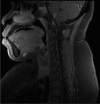Breaking Stereotypes: A Unique Presentation of New-Onset Multiple Sclerosis
- PMID: 38022207
- PMCID: PMC10666902
- DOI: 10.7759/cureus.47584
Breaking Stereotypes: A Unique Presentation of New-Onset Multiple Sclerosis
Abstract
Multiple sclerosis (MS) is a chronic demyelinating disorder resulting in demyelination, neuroaxonal degeneration, and sclerosis. This often-debilitating disease affects young females mainly. Literature describing the pathology and phenotypic features is vast. Although there are extensive descriptions of new-onset MS presentations, few document the initial presentation as a transient ischemic attack or ischemic stroke. The case we present highlights the rarity of such presentation. In the literature, we found scarce reports about MS as presenting as a stroke mimicker with some studies quoting from 2.2% to 4.4% of the cases having MS. Our case serves as a reminder that MS can mimic acute ischemic strokes and the importance of maintaining MS apart of the differential in a young female with no significant history present with acute neurological deficits to reduce the complications of MS and the healthcare-associated costs.
Keywords: acute stroke; atypical presentation; focal neurological deficits; multiple sclerosis; transient ischemic attack.
Copyright © 2023, Girgis et al.
Conflict of interest statement
The authors have declared that no competing interests exist.
Figures




References
-
- Multiple sclerosis. Compston A, Coles A. Lancet. 2002;359:1221–1231. - PubMed
-
- Multiple sclerosis re-examined: essential and emerging clinical concepts. Zurawski J, Stankiewicz J. Am J Med. 2018;131:464–472. - PubMed
-
- In the clinic. Multiple sclerosis. Harrison DM. Ann Intern Med. 2014;160:0–16. - PubMed
Publication types
LinkOut - more resources
Full Text Sources
